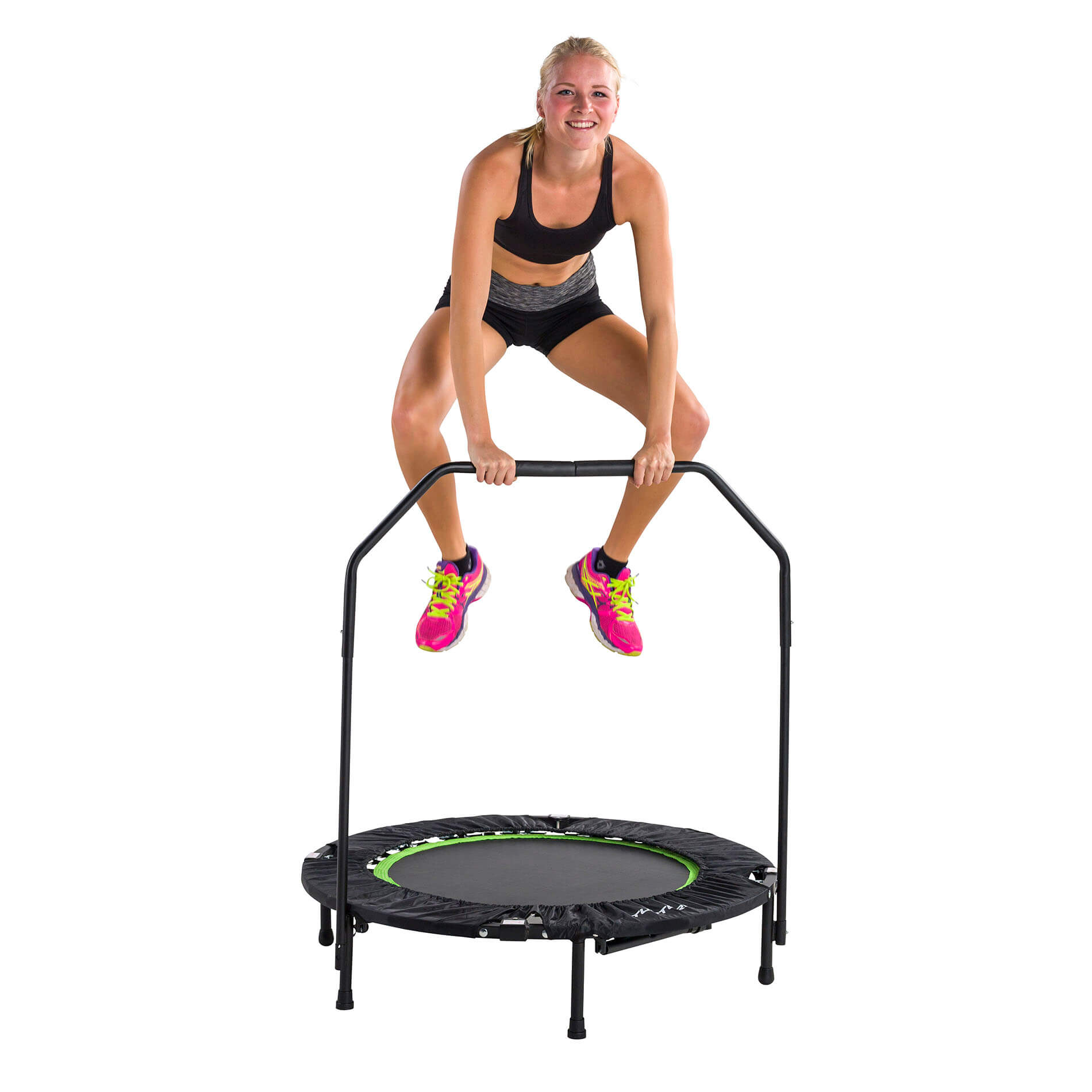Home>Gardening & Outdoor>Outdoor Recreation & Activities>How Heavy Is A Trampoline


Outdoor Recreation & Activities
How Heavy Is A Trampoline
Modified: January 9, 2024
Discover the weight of trampolines and tips for outdoor recreation and activities. Learn about the importance of weight when choosing a trampoline for your outdoor adventures.
(Many of the links in this article redirect to a specific reviewed product. Your purchase of these products through affiliate links helps to generate commission for Storables.com, at no extra cost. Learn more)
**
Introduction
**
Welcome to the exciting world of trampolines! Whether you're a seasoned trampoline enthusiast or a curious beginner, understanding the weight of a trampoline is crucial for various reasons. This article will delve into the intricacies of trampoline weight, exploring its significance and the factors that influence it.
Trampolines have been a source of joy and entertainment for people of all ages for many years. From bouncing in the backyard to honing acrobatic skills, trampolines offer a unique blend of fun and physical activity. However, the weight of a trampoline is often an overlooked aspect, yet it plays a vital role in the trampoline's performance, safety, and portability.
In this comprehensive guide, we will unravel the mysteries of trampoline weight, shedding light on its importance and the diverse factors that contribute to it. Whether you're considering purchasing a trampoline, moving an existing one, or simply curious about this dynamic piece of recreational equipment, understanding trampoline weight will equip you with valuable insights. So, let's bounce into the world of trampoline weight and discover its impact on your trampolining experience!
Key Takeaways:
- Trampoline weight affects safety, stability, and portability. Heavier trampolines offer more stability, while lighter ones are easier to move and set up.
- Understanding trampoline weight helps make informed decisions. It influences safety, load-bearing capacity, installation, and durability, shaping the trampolining experience.
Read more: How Heavy Is A Dishwasher
Understanding Trampoline Weight
When it comes to trampolines, weight is more than just a number. The weight of a trampoline encompasses various aspects that directly influence its functionality, safety, and usability. Understanding the significance of trampoline weight is essential for making informed decisions regarding purchase, setup, and maintenance.
The weight of a trampoline refers to the combined mass of its structural components, including the frame, springs, jumping mat, safety enclosure, and any additional features. This cumulative weight not only determines the trampoline’s stability and sturdiness but also affects its portability and installation requirements.
Trampoline weight plays a pivotal role in determining its load-bearing capacity and overall durability. A heavier trampoline is often associated with enhanced stability and resistance to tipping or shifting during use. This is particularly crucial for ensuring the safety of trampoline users, especially when multiple individuals are bouncing simultaneously.
Moreover, the weight of a trampoline influences its portability and maneuverability. Lighter trampolines are relatively easier to move, transport, and reposition, making them suitable for individuals who may need to relocate their trampolines frequently or adjust their outdoor setup based on seasonal changes.
Understanding trampoline weight also involves considering the distribution of mass across the trampoline’s components. The frame, springs, and other structural elements contribute to the overall weight, and their arrangement can impact the trampoline’s balance and responsiveness. Additionally, the weight of the jumping mat and safety enclosure influences the trampoline’s performance and resilience, especially in terms of withstanding repetitive impact and environmental elements.
By grasping the nuances of trampoline weight, enthusiasts and owners can make informed choices regarding the selection, placement, and maintenance of their trampolines. Whether aiming for a robust, stationary trampoline or a lighter, more mobile option, understanding trampoline weight empowers individuals to optimize their trampolining experience while prioritizing safety and convenience.
Factors Affecting Trampoline Weight
Several key factors contribute to the overall weight of a trampoline, each playing a distinct role in shaping its characteristics and performance. Understanding these factors provides valuable insights into the diverse elements that influence trampoline weight and functionality.
1. Frame Material and Design:
The material and design of the trampoline's frame significantly impact its weight. Steel frames, commonly used for their strength and durability, contribute to the overall mass of the trampoline. Additionally, the design of the frame, including its shape and reinforcements, influences its weight-bearing capacity and stability.
2. Spring Type and Quantity:
The springs on a trampoline play a crucial role in determining its weight. The material, length, and quantity of springs contribute to the overall mass of the trampoline. Heavy-duty, galvanized springs are often utilized for their resilience and longevity, adding to the trampoline's weight while enhancing its performance.
3. Jumping Mat and Safety Enclosure:
The jumping mat and safety enclosure, essential components of a trampoline, also contribute to its weight. The quality of the materials used, such as UV-resistant polypropylene for the mat and robust mesh for the enclosure, impacts their individual and collective weight, influencing the overall trampoline mass.
4. Additional Features and Accessories:
Certain trampoline models may incorporate extra features, such as ladder attachments, anchor kits, or specialized padding. These additional components contribute to the overall weight of the trampoline, enhancing its functionality while affecting its portability and installation requirements.
5. Size and Shape:
The size and shape of a trampoline directly influence its weight. Larger trampolines naturally possess greater mass due to their expanded surface area and the need for additional structural support. Similarly, trampolines with unique shapes, such as rectangular or oval designs, may exhibit variations in weight compared to traditional round trampolines.
Understanding the interplay of these factors provides prospective trampoline owners with valuable insights into the diverse elements that contribute to trampoline weight. By considering these factors, individuals can make informed decisions when selecting a trampoline that aligns with their preferences, space constraints, and usage requirements. Whether prioritizing durability, portability, or specific features, awareness of the factors affecting trampoline weight empowers consumers to choose trampolines that best suit their needs and preferences.
When determining the weight of a trampoline, consider the size and materials used. A standard 12-foot trampoline can weigh between 150-250 pounds, while smaller ones can weigh around 100 pounds. Always check the manufacturer’s specifications for the exact weight.
Average Weight of Different Trampoline Types
Trampolines come in various types and sizes, each exhibiting distinct characteristics that influence their weight. Understanding the average weight of different trampoline types provides valuable insights into the diverse options available to enthusiasts and prospective buyers.
1. Round Trampolines:
Round trampolines, characterized by their traditional circular shape, are among the most common trampoline types. Their average weight typically ranges from 100 pounds for smaller models to 250 pounds for larger, sturdier variants. The weight of a round trampoline is influenced by factors such as frame material, spring quantity, and overall diameter.
2. Rectangular Trampolines:
Rectangular trampolines, favored for their responsive bounce and spacious design, exhibit variations in weight compared to round trampolines. On average, rectangular trampolines weigh between 150 to 350 pounds, with heavier models featuring reinforced frames and a greater number of springs to support their elongated shape.
3. Oval Trampolines:
Oval trampolines offer a unique blend of ample jumping space and a compact footprint. Their average weight typically falls within the range of 200 to 350 pounds, influenced by the structural requirements for supporting the elongated, oval configuration while maintaining stability and durability.
4. Mini Trampolines:
Mini trampolines, also known as rebounders, are smaller, lightweight alternatives designed for indoor or low-impact use. Their average weight ranges from 15 to 35 pounds, making them easily portable and suitable for activities such as fitness routines and therapeutic exercises.
5. Water Trampolines:
Water trampolines, designed for aquatic enjoyment on lakes and ponds, exhibit unique weight characteristics due to their buoyant and water-resistant construction. On average, water trampolines weigh between 100 to 300 pounds, with inflatable components contributing to their overall mass.
By familiarizing themselves with the average weight of different trampoline types, individuals can make informed decisions based on their preferences, available space, and intended usage. Whether seeking a standard round trampoline, an expansive rectangular model, or a specialized water trampoline, awareness of the average weights of these trampoline types facilitates the selection of a trampoline that aligns with specific requirements and usage scenarios.
Importance of Knowing Trampoline Weight
Understanding the weight of a trampoline holds significant importance, encompassing various practical, safety, and logistical considerations that directly impact the trampolining experience. Whether you’re a trampoline enthusiast, a concerned parent, or a prospective buyer, recognizing the importance of knowing trampoline weight is essential for informed decision-making and responsible ownership.
1. Safety and Stability:
The weight of a trampoline directly influences its stability and resistance to tipping or shifting during use. A heavier trampoline is often associated with enhanced stability, reducing the risk of unexpected movement or imbalance while individuals are bouncing. This is particularly crucial for ensuring the safety of users, especially children, and minimizing the potential for accidents or injuries.
2. Load-Bearing Capacity:
Knowing the weight of a trampoline is essential for understanding its load-bearing capacity, which determines the maximum weight it can support during use. This knowledge is particularly important for ensuring that the trampoline can accommodate the intended number of users, preventing overloading and potential structural strain.
3. Installation and Setup:
The weight of a trampoline affects its installation and setup requirements. Heavier trampolines may necessitate additional assistance and specialized equipment for assembly, particularly when positioning them in designated outdoor areas. Conversely, lighter trampolines offer greater maneuverability and ease of installation, making them suitable for individuals who may need to relocate or adjust their trampolines periodically.
4. Portability and Storage:
For individuals seeking portable or space-efficient trampoline options, knowing the weight of different trampoline types is crucial. This knowledge enables informed decisions regarding the ease of transportation, repositioning, and storage, especially for trampolines that may need to be moved seasonally or in response to changing outdoor conditions.
5. Structural Durability:
Trampoline weight is a key indicator of its structural durability and resilience. Heavier trampolines often feature robust materials and reinforced components, enhancing their ability to withstand prolonged use, environmental factors, and repetitive impact. This knowledge is essential for ensuring the long-term performance and longevity of the trampoline.
By recognizing the importance of knowing trampoline weight, enthusiasts and owners can make informed decisions regarding the selection, installation, and maintenance of trampolines. Whether prioritizing safety, convenience, or specific usage requirements, awareness of trampoline weight empowers individuals to optimize their trampolining experience while fostering a safe and enjoyable environment for users of all ages.
Read more: How To Jump On A Trampoline
Conclusion
Exploring the weight of trampolines unveils a world of essential considerations and insights that are integral to the trampolining experience. From safety and stability to practicality and usage scenarios, trampoline weight plays a pivotal role in shaping the functionality and suitability of these beloved recreational devices.
By delving into the nuances of trampoline weight, enthusiasts, parents, and prospective buyers gain valuable knowledge that informs their decisions and fosters responsible ownership. Understanding the factors that influence trampoline weight, including frame materials, spring configurations, and additional features, empowers individuals to select trampolines that align with their preferences, space constraints, and usage requirements.
Moreover, recognizing the importance of knowing trampoline weight fosters a culture of safety and informed decision-making within the trampoline community. Whether it’s ensuring the stability and load-bearing capacity of a trampoline, facilitating its installation and portability, or prioritizing its structural durability, awareness of trampoline weight enhances the overall trampolining experience while promoting a safe and enjoyable environment for users of all ages.
As trampolines continue to captivate individuals with their blend of fun and physical activity, the weight of these dynamic devices remains a fundamental aspect that shapes their performance and usability. By embracing the significance of trampoline weight and its impact on safety, practicality, and structural integrity, trampoline enthusiasts can embark on their bouncing adventures with confidence, knowing that their trampolines are not only a source of joy but also a reflection of informed decision-making and responsible ownership.
Frequently Asked Questions about How Heavy Is A Trampoline
Was this page helpful?
At Storables.com, we guarantee accurate and reliable information. Our content, validated by Expert Board Contributors, is crafted following stringent Editorial Policies. We're committed to providing you with well-researched, expert-backed insights for all your informational needs.















0 thoughts on “How Heavy Is A Trampoline”